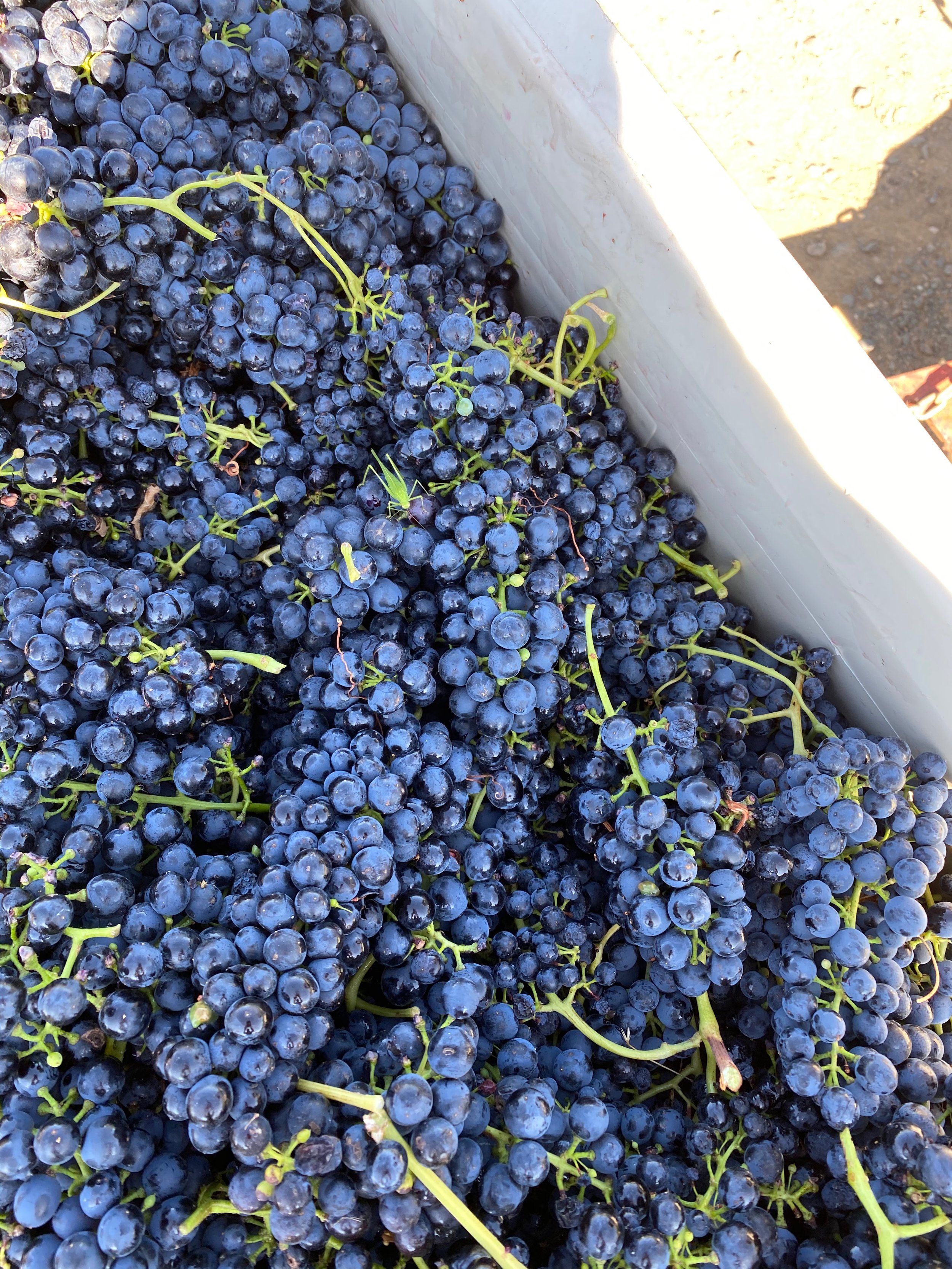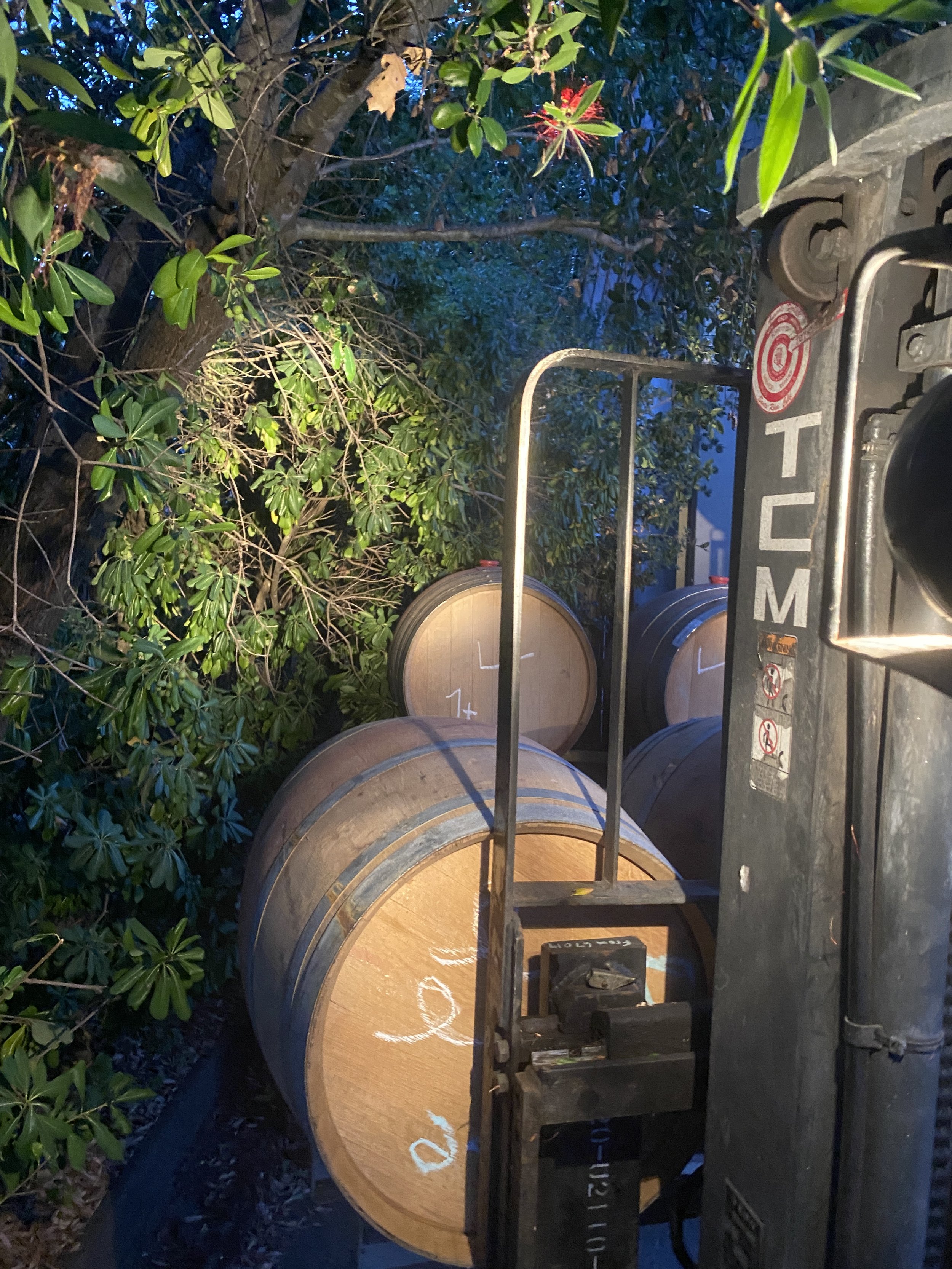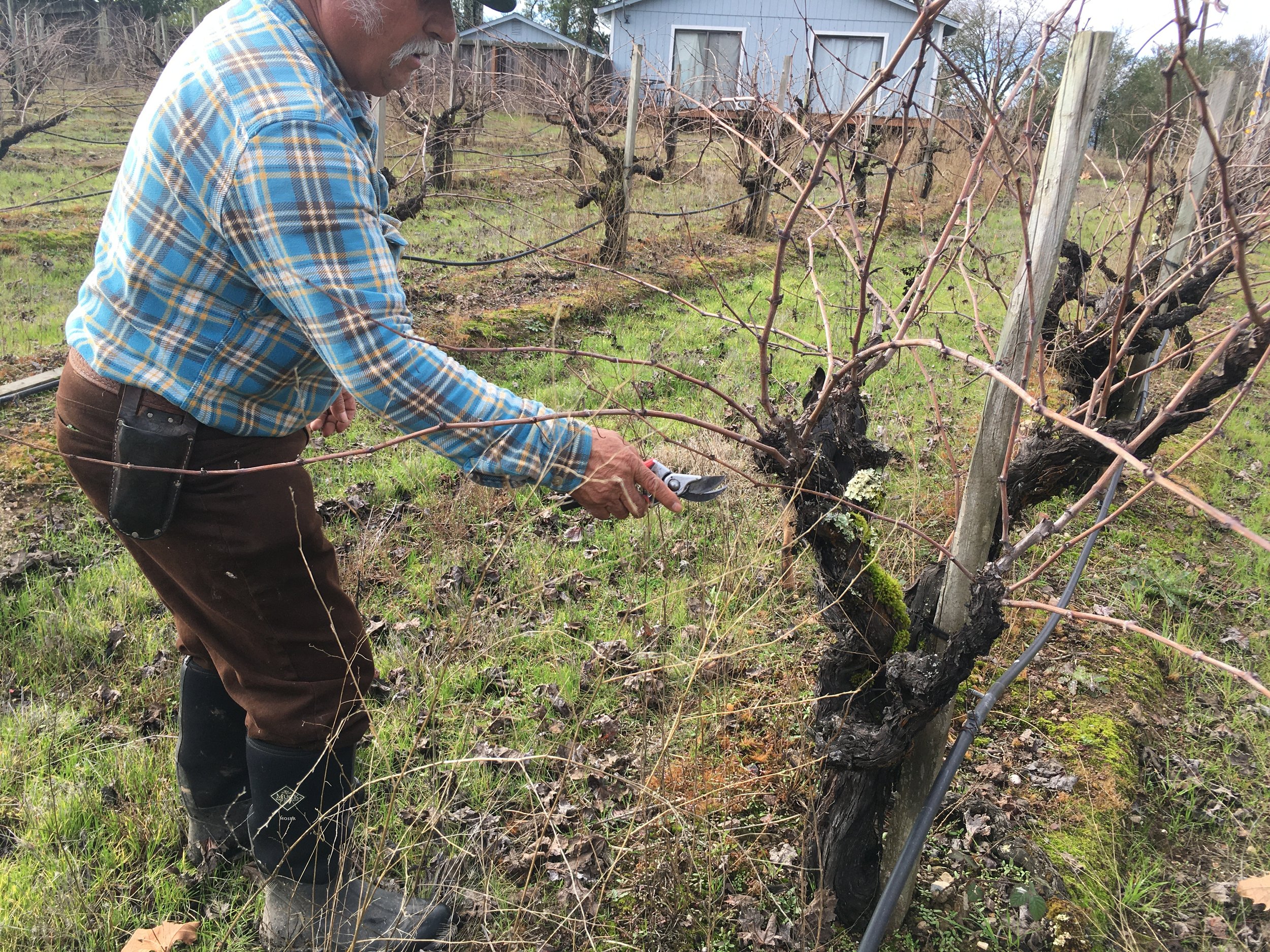


Syrah 2021
Our first Syrah was the 2020 vintage, and it was delicious. The 2021 is even better. To begin, we had more fruit to work with, so we took some chances, did some whole-cluster fermentation, and let the stems slow down the fermentation. We also picked a little earlier, so the alcohol is lower, but the wine still has guts, it has complexity, and it has the ability to age. If you want to wait that long.
The Grape
The grape is native to France, namely the Rhône Valley, but it can be found the world over. In Australia, where it's known as Shiraz, the wines are often towering skyscrapers of fruit and booze. I don't love them, but many people do. In France's Rhône Valley, the wines are still on the full-bodied side, but less exuberant, showing earth and tar alongside the fruit, with tannins you can feel. California is a mixed bag, depending on the producer and where the grapes are planted, but most examples are on the richer side. To be candid, I find there is a sameness to many examples from the state, and often too much new oak. Others, however, like Tensley, Tablas Creek, and Camins 2 Dreams consistently craft knockout wines. If ours is sold out, these will not disappoint.
The Source
We grow the Syrah here, where we live, on the Collins Vineyard. For all the geeky details, please click here.
The Winemaking
Three-quarters of the fruit was destemmed and crushed, while the other quarter was left on the stems. Including the stems can add complexity by contributing flavors and tannins not found in the grapes themselves, but stems also slow down the fermentation by allowing better circulation of juice and oxygen. For myriad reasons, slower is better (more fruit, rounder tannins, etc.), but stems are no guarantee of a better wine. They can raise the pH, lower the acidity, and many other things you may not want. Fortunately, it worked in our favor, and we barreled down the wine in October 2021. And there it sat, quietly, for 34 months. Did it need almost three years in barrel? No, but our second child arrived in 2023, right when we normally would have bottled, and so it sat. But we got lucky, as the additional year in neutral oak made a far more seamless wine. So after adding a small amount of SO2 to keep it safe, it was bottled up in August 2024.
How's it taste?
This Syrah has roses and liqueur and dry-aged meat. You'll taste blackberries and dark fruits but also leather and earth. What captivates me is how broad and rich the wine is, but also fresh and vibrant. That juxtaposition is what makes this bottle so special.
How to drink and enjoy
These wines were bottled in late August, and could use another month or two to find their feet. Wines also don't like being shipped, and are usually much better if given a week or so to settle down.
But who has such patience? I know I don't, so here's the fix: Open it the night before (or morning of), pour a couple ounces out, replace the cork, shake it up good, and let it sit until you're ready to consume. Oh, and serve around 60 degrees if possible. Your efforts (and patience) will be rewarded.
Details
Appellation: Russian River River
Vineyard: Collins Vineyard, planted 1980
Aging: 34 months in neutral French oak
Production: 97 cases
Specs: Alcohol: 14.4% | Titratable Acidity: 6.37 g/L | pH: 3.68 | Volatile Acidity: 0.99 g/L
Our first Syrah was the 2020 vintage, and it was delicious. The 2021 is even better. To begin, we had more fruit to work with, so we took some chances, did some whole-cluster fermentation, and let the stems slow down the fermentation. We also picked a little earlier, so the alcohol is lower, but the wine still has guts, it has complexity, and it has the ability to age. If you want to wait that long.
The Grape
The grape is native to France, namely the Rhône Valley, but it can be found the world over. In Australia, where it's known as Shiraz, the wines are often towering skyscrapers of fruit and booze. I don't love them, but many people do. In France's Rhône Valley, the wines are still on the full-bodied side, but less exuberant, showing earth and tar alongside the fruit, with tannins you can feel. California is a mixed bag, depending on the producer and where the grapes are planted, but most examples are on the richer side. To be candid, I find there is a sameness to many examples from the state, and often too much new oak. Others, however, like Tensley, Tablas Creek, and Camins 2 Dreams consistently craft knockout wines. If ours is sold out, these will not disappoint.
The Source
We grow the Syrah here, where we live, on the Collins Vineyard. For all the geeky details, please click here.
The Winemaking
Three-quarters of the fruit was destemmed and crushed, while the other quarter was left on the stems. Including the stems can add complexity by contributing flavors and tannins not found in the grapes themselves, but stems also slow down the fermentation by allowing better circulation of juice and oxygen. For myriad reasons, slower is better (more fruit, rounder tannins, etc.), but stems are no guarantee of a better wine. They can raise the pH, lower the acidity, and many other things you may not want. Fortunately, it worked in our favor, and we barreled down the wine in October 2021. And there it sat, quietly, for 34 months. Did it need almost three years in barrel? No, but our second child arrived in 2023, right when we normally would have bottled, and so it sat. But we got lucky, as the additional year in neutral oak made a far more seamless wine. So after adding a small amount of SO2 to keep it safe, it was bottled up in August 2024.
How's it taste?
This Syrah has roses and liqueur and dry-aged meat. You'll taste blackberries and dark fruits but also leather and earth. What captivates me is how broad and rich the wine is, but also fresh and vibrant. That juxtaposition is what makes this bottle so special.
How to drink and enjoy
These wines were bottled in late August, and could use another month or two to find their feet. Wines also don't like being shipped, and are usually much better if given a week or so to settle down.
But who has such patience? I know I don't, so here's the fix: Open it the night before (or morning of), pour a couple ounces out, replace the cork, shake it up good, and let it sit until you're ready to consume. Oh, and serve around 60 degrees if possible. Your efforts (and patience) will be rewarded.
Details
Appellation: Russian River River
Vineyard: Collins Vineyard, planted 1980
Aging: 34 months in neutral French oak
Production: 97 cases
Specs: Alcohol: 14.4% | Titratable Acidity: 6.37 g/L | pH: 3.68 | Volatile Acidity: 0.99 g/L
